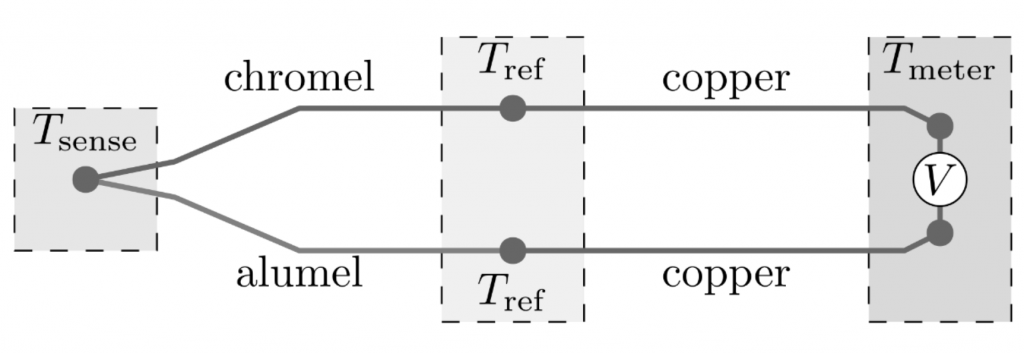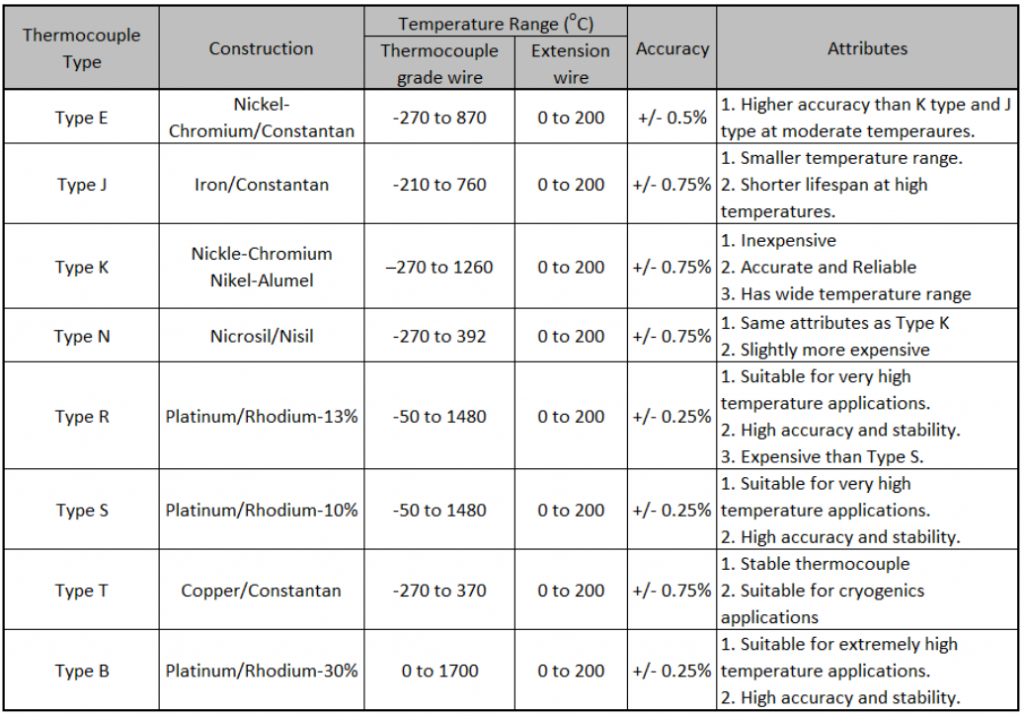Thermocouple
A Thermocouple is a sensor used to measure temperature in the process industry. Thermocouples consist of two wire legs made of different metals. The wire legs are welded together at one end, called a junction. This junction is placed in the measuring stream. When the junction experiences a change in temperature, a voltage is created. Both legs conduct this voltage according to their conductivity. A voltmeter at the other end measures this voltage difference and compares it with the reference. The resultant value can calculate the temperature of the stream using the reference table. The schematic diagram of the thermocouple assembly is shown below:

Advantages of Thermocouple
- Very wide temperature range
- Available in small size
- Low initial cost
- Direct contact with the measuring fluid
- Durable
Read also: Level Measuring Devices in the Industry
Disadvantages of Thermocouple
- Less accuracy
- Recalibration is difficult
- Can be affected by the corrosion

Bimetallic strip
The bimetallic strip is another method of measuring the temperature of a system. The principle behind a bimetallic strip thermometer relies on the fact that different metals expand at different rates as they are exposed to high temperatures.
By bonding two different metals together, you can make a simple electric controller that can withstand fairly high temperatures. This sort of controller is often found in ovens.
This type of thermometer is based on the property of solid expansion. When metals are heated they expand at different rates proportional to the temperature change, the square of the length, and inversely as the thickness in the linear deformation. Two different metallic wires are welded together in length to form the bimetallic strip. Each metal has a different coefficient of expansion (k), the metal with a higher coefficient of expansion expands more than the metal with a lower coefficient of expansion and thus the strip bends in the direction of metal with less expansion.

Thermistors
A thermistor is a temperature sensor constructed of semiconductor material that exhibits a large modification in resistance in proportion to a tiny low modification in temperature. Thermistors are inexpensive, rugged, reliable, and respond quickly. Because of these qualities thermistors are used to measure simple temperature measurements, but not for high temperatures. A thermistor is easy to use, cheap, durable, and responds predictably to a change in temperature.
Thermistors are mostly used in digital thermometers and home appliances such as refrigerators, ovens, and so on. Stability, sensitivity, and time constant are the final properties of thermistors that create these thermistors sturdy, portable, cost-efficient, sensitive, and best to measure single-point temperature. Thermistors are available in different shapes like a rod, disc, bead, washer, etc. This article gives an overview of thermistor working principles and applications.
1 Comment
Thermocouple - Chemiopedia · June 14, 2022 at 4:04 pm
[…] See: Temperature Sensing Elements […]
Comments are closed.